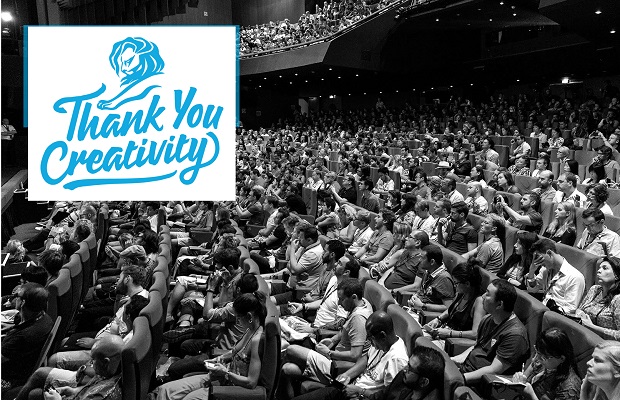As Cannes Lions 2016 comes to a close for another year, it was the year of the upstarts, as the likes of Snapchat, BuzzFeed, Vice and The Lad Bible dominated conversations. We look at how these four upcoming digital stars fared at this year’s festival…
While the big players, agencies and technology providers were all present, it was the likes of Snapchat, BuzzFeed, Vice and the Lad Bible that got much attention, as marketers try to figure out how to use these new platforms to reach consumers effectively.
Snapchat becoming the new TV for teens
“Where’s Snapchat?” was a popular question all week at Cannes Lions as the company didn’t have speakers on stage. But it actually threw a secret party for agency execs, and CEO Evan Spiegel was in attendance to talk with them.
In keeping with the chat apps ‘secretive’ nature, its presence at Cannes was via a top mysterious compound that was used to strike ad deals with big publishers and brands.
Here’s the secret compound Snapchat is using to strike ad deals at Cannes https://t.co/WUDgjL1UxG *ghostgate*
— Edmund Lee (@edmundlee) June 22, 2016
The Snapchat meeting space was blocked by high shrubs, a big black gate and multiple security guards. The compound, with a subtle ‘ghost’ logo on the front of the gates, was used to broker deals with advertisers.
Snapchat also rolled out new YouTube video touting itself as a premiere destination for advertisers keen on reaching the coveted millennial set.
Snapchat reaches 41% of 18- to 34-year-olds, according to the video, compared with about 6% for the average television channel.
The social app which sends self-destructing messages also has 100 million daily users, each of whom spend an average of 25-30 minutes on the app each day.
Snapchat video views have grown by more than 350% in the past year, and twice as many millennials watched the first Republican presidential debate on Snapchat as did on regular TV.
Earlier this month week, Snapchat announced a number of new ad products, including the functionality for ad tech firms to easily integrate ads onto Snapchat’s platform.
The company also introduced an ad format called Snap Ads, which lets users swipe up on ads to watch longer videos, view content in a mobile browser, read an article, or download an app.
While Snapchat’s advertising product is only a year old, the company anticipates at least $300 million in revenue this year.
Mondelez goes big on BuzzFeed
BuzzFeed has been a champion on native ads, and brands are starting to take notice. At Cannes, Mondelez outlines its ambition for creating content that’s so good broadcasters and other media companies will actually buy it. This strategy, it believes, will see 10 per cent of its global media investments to break even or turn a profit within the next three years.
To achieve this, Mondelez is turning to BuzzFeed to help produce more non-traditional advertising, such as apps, games and sponsored content.
So while Mondelez will ideally end up spending more on its total marketing budget, its agency partners will almost certainly have less influence on the creative directions of its work moving forward. Mondelez hopes to turn at least 10 percent of its global media investments profitable by 2020.
Vice Media tinkers with mobile native ads
Meanwhile, Vice Media’s CEO used Cannes to explain how he wants to build a native ad lab to fix the mobile monetisation debacle.
Shane Smith, Vice Media’s chief executive, wants to build an in-house native ad team similar to the one he set up for its TV network in an attempt to use those learnings to finally monetise mobile effectively.
“People are watching these promos because its actual content they want so see. And that’s been really encouraging to see with the success of Vice Labs and how we ported that from TV to mobile and online,” said Smith at the Cannes Lions advertising festival. “In a way it’s a derivative of the native which we developed online and how we’re seeing what works because the two things are different. We’re trying to get a mobile lab [to create our mobile ads] because mobile monetisation, unless you’re Facebook, is very difficult and our biggest challenge right now is to figure out if the native [content] can work on mobile, which includes with the carriers.”
“You have to make content that’s good enough that it can stand on its own so you can license to mobile carriers, sell the TV [rights] around the world or monetise on your own platform, for example,” said smith. “What a lot of people don’t realise about content is that with all the sub fees and the license fees that there’s a tremendous amount of revenue you can bring in if its good.”
Lad Bible: Marketers often misunderstand the ‘Generation Z’
Brands and marketers need to “catch up” with Generation Z and work out how to engage these “highly sophisticated decision makers” argued Mimi Turner, marketing director at The Lad Bible.
Speaking at the Teads and Marketing Week panel on advertising and Generation Z, Turner hit back at those agencies and brands who are dismissive about the younger generation.
“People talk a lot about Gen Z and their really short attention span and I think that’s exactly what grown ups say when they don’t understand something. [They are] highly sophisticated decision makers, and marketers and brands need to catch up with that.
